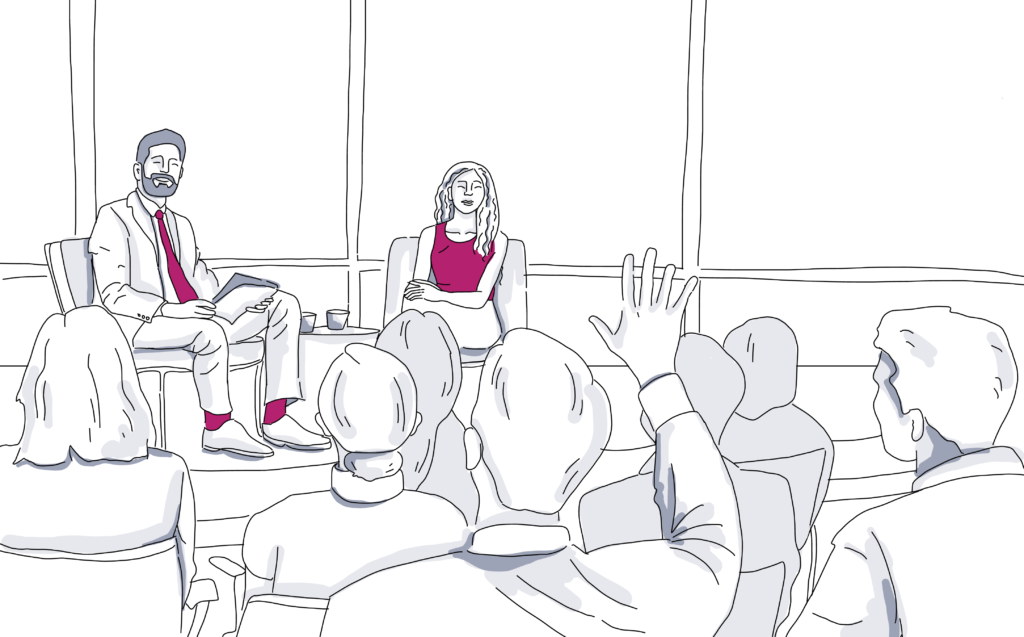
How to Plan the Best Event in 10 Stress-Free Steps
Wondering how to plan an event? Sure, thinking about it can feel a bit like trying to study alchemy. You start with just a vision and a budget, then you turn it into an event full of guests and moving parts.
Depending on the type of event, tons of details are going to vary. But no matter what, there are usually ten steps you can count on in the journey from idea to shindig.
Here we’ve rounded up those steps, along with plenty of tried and true tips for planning an event. Good luck!
1. Align on the event purpose with stakeholders
2. Lock in your event budget
3. Figure out who your potential attendees are
4. Find a venue that fits your event purpose
5. Establish the event team
6. Promote your event with a strong marketing plan
7. Seek out sponsors to help finance the event
8. Work with suppliers based on your event needs
9. Utilize event technology to streamline planning
10. Create a compelling & interactive event agenda
1. Align on the event purpose with stakeholders.
Planning a successful event starts by recognizing that attendees are looking for more than an event ” they’re looking for an experience. And to create an experience, every little piece of the event needs to map back to the purpose, from the venue to the food.
Determining that purpose begins by working with key stakeholders to figure out why the event needs to happen. We think Marriott’s Meetings Imagined framework does a great job of boiling this concept down to seven potential purposes:
- Celebrate – Celebrating an achievement or milestone (Example: One millionth customer celebration)
- Decide – Outlining strategies or a path forward in some manner (Example: Quarterly board meeting)
- Educate – For the purposes of professional or educational development (Example: SaaS user conference)
- Ideate – Coming together to create new approaches or ideas (Example: Internal design sprint)
- Network – Create opportunities for people who may share common interests to connect (Example: Tradeshow)
- Produce – Attendees work together towards a specific goal (Example: Volunteer event)
- Promote – Communicating new offerings or ideas to generate desire amongst a new audience (Example: Product launch party)
How will you measure success?
One of the most important pieces of working with stakeholders is to align on how you’ll determine the success of the event based on the purpose. While attendance is a mark of success no matter the meeting purpose, success usually has multiple layers.
For example, if the purpose of the event is to promote a new product, the measure of success is most likely going to be the number of leads generated for your sales team. While for an event where the purpose is to educate, a key measure of success will likely be how well content translates into attendee engagement.
Your success as the event planner relies on your ability to not only create a successful event, but also your ability to communicate that success to stakeholders based on shared performance indicators that show event ROI.
2. Lock in your event budget.
You event depends on the purpose from a visionary perspective, but when it comes to execution, the realities of what you can accomplish come down to your event budget. That number is likely coming from your stakeholders, and there’s not always going to be wiggle room. But that’s not to say you can’t negotiate.
Tips for negotiating a bigger event budget
When it comes to negotiating an event budget, the language stakeholders speak most fluently is data. Unfortunately, if you don’t have previous events under your belt, you probably don’t have any data on hand to make your case.
To get the budget you want, you’re going to have to put a little extra elbow grease in up front. Map out every piece of your event (we’ll get to this in the next section!) that requires spend, and include an educated prediction on how much it’s going to cost to carry it out well. Then comes the most important part. Ask!
While you may not be able to negotiate enough of a boost to close the gap everywhere, you might be able to meet in the middle with a little extra budget for the pieces you care about most.
[Tweet “No matter what, there are usually ten steps you can count on in the event planning journey from idea to shindig.”]
How to plan an event budget
For a normal event, most of your money is going to go toward the venue rental, food and beverage costs, and A/V needs. But there are plenty more where those came from! Just check out the infographic below that we put together using exclusive survey data collected by Social Tables.
When you’re planning your event budget, make sure that you’re including each of these pieces in your estimates to avoid going over budget.
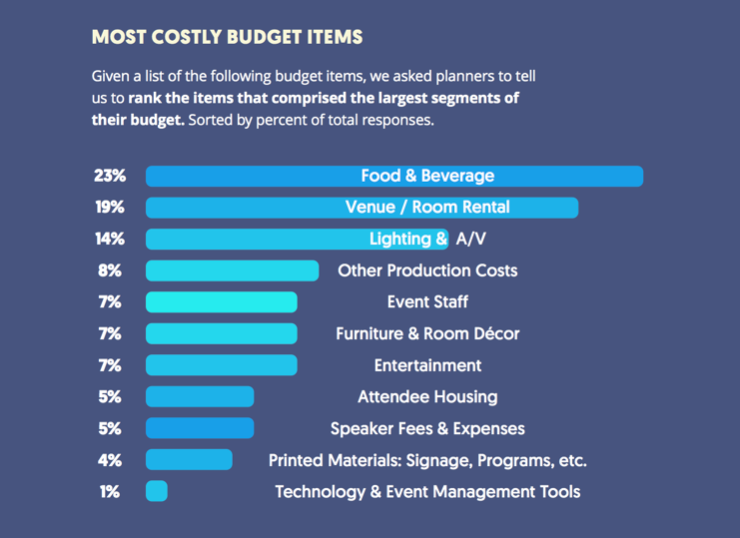
Pro Tip: Speaking of budgetary concerns, there are hidden costs to look out for, such as last-minute print jobs, or additional audio/visual resources. Estimate anywhere from 3-10% of your total costs and include within your budget to protect you, in case you get any great ideas, or additions that might come after your initial budget.
3. Figure out who your potential attendees are.
Now that you know why you’re planning the event, it’s time to figure out who needs to come. That’s usually a question of 1) who’s going to benefit from the purpose of the event or 2) who needs to be present to work towards a goal.
For small events where you know your audience, putting together and reaching a guest list can be simple. But for larger events like a conference or a community-wide event, the attendee pool is likely to be a lot more dynamic.
The power of attendee personas
If you’re planning a large event, your potential attendees likely have different preferences, desires, learning styles, etc. So applying the same formula across the board at any stage of the event funnel would mean watering down how effectively you’re engaging any given person.
The larger and more complex the audience, the more helpful it can be to bucket potential attendees into personas based on commonalities. Using these personas to create targeted tactics ultimately results in more personalized experiences that have stronger appeal to the people that you’re trying to reach.
A real-life example of how to plan around personas
The event experience company Experient uses a portfolio of 20+ event personas to help event planners get a better understand of attendee motivations. At a recent conference hosted by the company, planners put some of these personas to use in their own planning to create unique experiences for each.
One of these personas was the be-wellster, the type of attendee who is very focused on health and holistic wellbeing. For this persona, the Experient team planned runs, yoga sessions, healthy meals, and even breakout time for in-session meditation.
Sure, your event may not be as evolved as Experient’s, but every event can benefit from some personalization. The who riddle always has more than one answer when you look to the next layer.
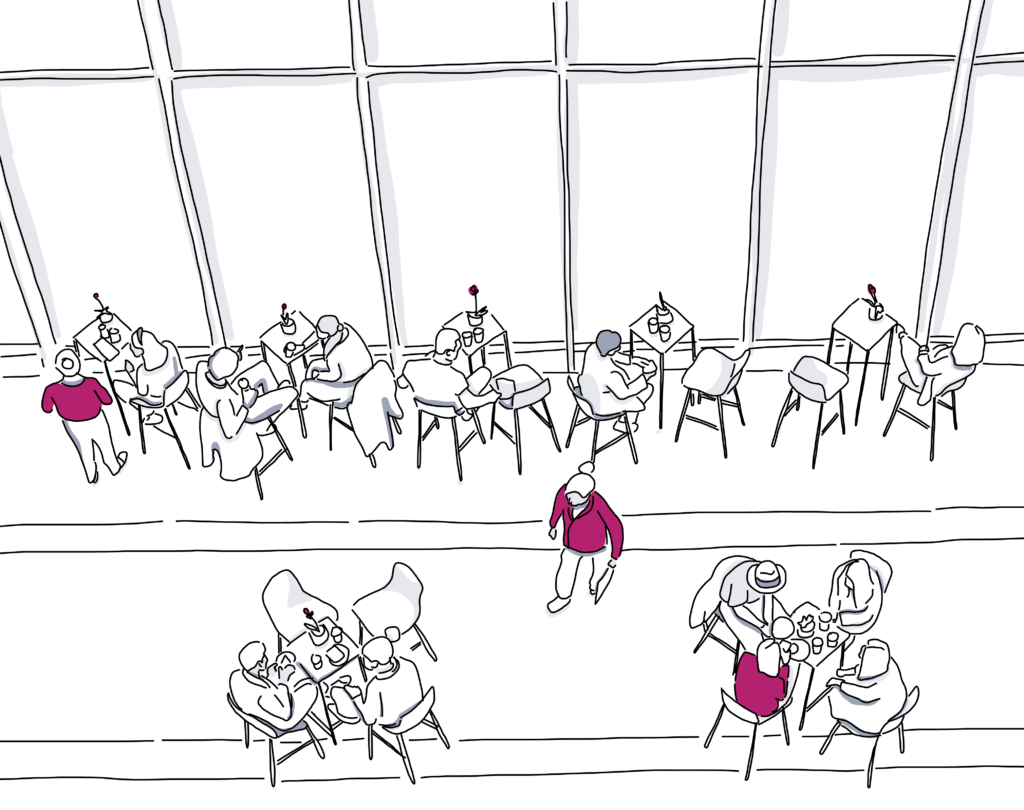
4. Find a venue that fits your event purpose (and budget!).
A great destination choice can increase attendance by as much as 80% according to a recent study! But that’s just one small piece of why it’s a big deal. It also has huge implications for the success of the content delivery and overall attendee engagement.
A simple way to think about choosing a venue is setting the stage for a play. You can’t have a great play with the wrong stage set up, so what’s the ideal backdrop for your particular purpose? And just as importantly, is it going to fit your budget?
It’s like designing the stage. What kind of feel do you want the stage to have when your attendees come out? It has a direct impact on their experience.
– Christine Shimo Shimasaki, CDME, CMP, President 2Synergize, Inc.
Luckily, the internet has made the search a lot easier, especially with the rise of venue search engines. Planners can compare venues, filter results based on event specifics, and even submit eRFPs (electronic request for proposal).
For larger events, there’s also the added option of working with the CVB (conventions & visitors bureau) of a host city. Major cities use tax money to create these non-profits, which help connect events with venues at no cost to planners.
Think about rates, dates, and space.
Wondering how to choose an event venue that’s actually going to work? Generally, a you can find a great fit for your event by thinking about it in terms of rates, dates, and space.
Start with rates.
Your venue options are limited by your financial realities (we don’t have to tell you that!), so the search starts here. Do a little research and get a sense of the types of venues that fit your budget. While you won’t know the exact quote for your event yet, you should be able to find out enough to judge if it’s a possibility.
Start putting together a list of these venues without too much scrutiny other than making sure they have a space large (or small!) enough to fit your needs. The other elements we cover are going to help you narrow things down from here.
Narrow down by considering space.
When you were putting together your initial list, you took a look at capacity, but it’s important to think about how the space will fit the more specific needs of your event beyond just headcount.
Are you going to need breakout spaces to run sessions at the same time?
If people are coming from out of town, will they be able to travel there easily enough?
Do you want the ability to use an outside caterer?
You won’t quite have the specifics you need to choose between finalists, but it’s these types of questions regarding space that are going to help you get to that point.
Time to talk dates.
At this point, you have a small list of venues that you think could possibly work well for your event. The final filter that’s going to help you narrow it down to the finalists is whether or not there is space available for your dates.
If you have a specific date, you could be a little limited. But if you’re date is flexible, that’s something you can leverage to bring down your quote when the time comes. To get you to move from a busier date, venues will often offer to pencil you in elsewhere on the calendar for a lower rate.
Submit your RFPs & get ready to negotiate.
When you have your list of finalists in hand you’ll have to submit a request for proposal to most of them (especially hotels!) to get a quote on what your event might cost. If the hotel or venue sees adequate potential value in your RFP, you’ll receive a proposal outlining their quote as well as the specifics of the services included in that price point.
In most cases, the details of the proposal aren’t set in stone. With some savvy skills and a side of confidence, negotiating a venue contract can lead to a final agreement that’s much more favorable than what was in the initial proposal. Just remember: If possible, always ask for an in-person site inspection before you sign on the dotted line.
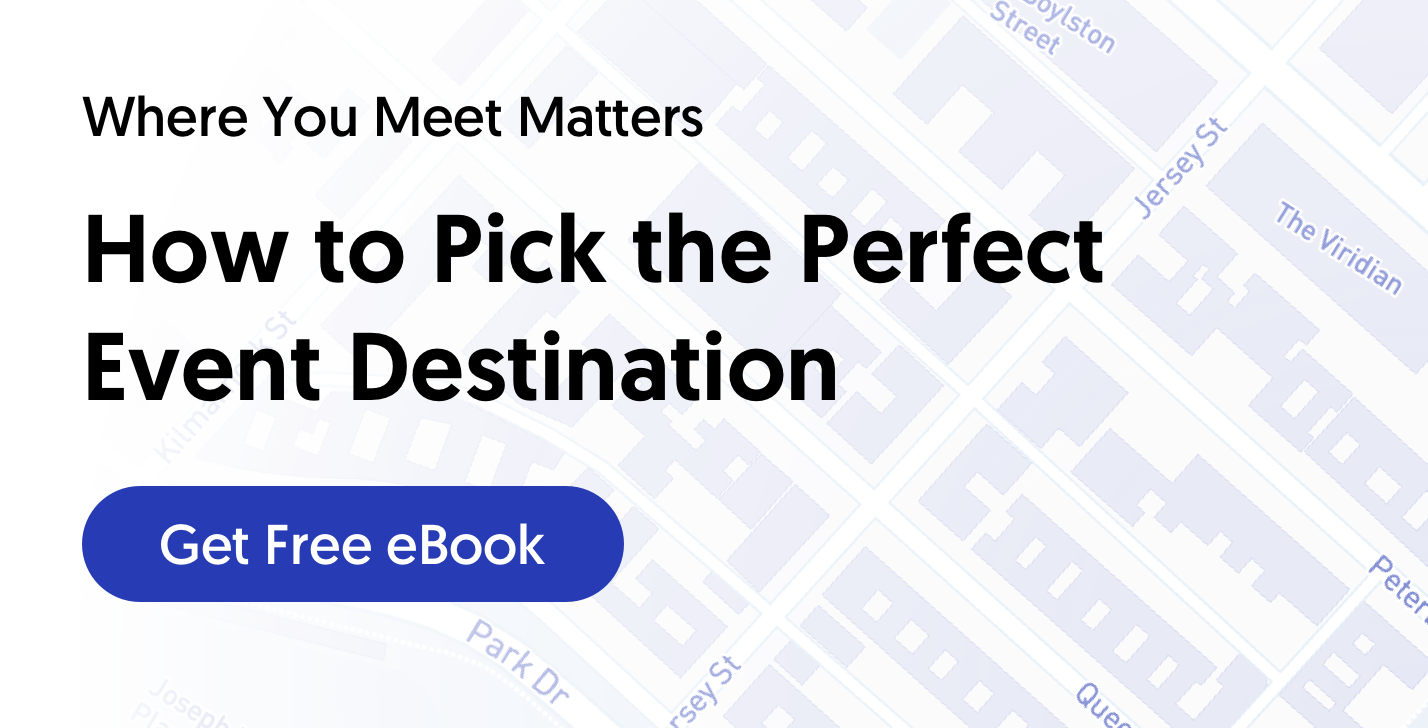
5. Establish the event team.
Unless your event is really small, you’re going to need a hand. Well really, you’re going to need a few sets of them. Because while you may have the vision for the final product, you’re going to be stretched a little thin if you’re expected to focus on everything when planning an event. Plus, something like say, digital marketing might not exactly be your forté.
As the visionary, your role is director. It’s up to you to not only assemble your team, but also to make sure that the many wheels are all spinning in the right direction.
Depending on the size of your event, here are a few team members that can help you handle all the moving parts. You’ll also be working with venue representatives and your fair share of suppliers, but this is who you can consider your internal team.
Marketer(s)
We’ll touch on everything that goes into a good marketing plan a bit later in this post, but trust us when we say you might want an expert to help you promote your event. Marketing experts can help you put together a cohesive strategy spanning a mix of channels, so you can extend your reach and attract people to your event. (And make the most of your marketing budget while you’re at it!)
Program Administrators
When it comes to the success of your event, content is key ” especially if the purpose is to educate or promote. Your program administrator(s) will help you create and carry out a compelling agenda that keeps attendee engagement high for the entirety of your event.
Accountant/Treasurer
Events have to both go by the book and keep everything on the books. For larger events, that can be a little more complicated. A treasurer or accountant will help keep your finances in order and make sure you’re staying within your budget. (If you’re putting on a fundraising event, you’re definitely going to need one!)
Creative
What’s your event logo? What are your colors? How are you going to bring the personality (e.g. brand & voice) to life? All of these are questions for creative experts like graphic designers and copywriters. These team members work closely with your marketing team and program administrators to make sure all communications and collateral embody your brand.
6. Promote your event with a strong marketing plan.
The success of your event probably hinges on your ability to get registrations. (Unless you’re planning an all-hands or a similar type of meeting where you can expect everyone to show up just by sending an email.) And to get registrations, you need to get the word out.
This is where a strong event marketing plan comes into play ” but there’s no one-size fits all. Some events may benefit more from a strategy relying mostly on small partnerships and local SEO (ex: weekly farmer’s market), whereas others may require an ad-heavy strategy that does most of the heavy lifting on social media (ex: industry conference.
So remember, while the need for promotion is nearly universal, creating the right marketing plan is far from it. Still, there are three main channels where you’re likely going to be putting most of your marketing resources toward.
Social Media
Instagram, Facebook, Twitter, Snapchat¦ these are some of the social media channels that are waiting to help extend your reach. Most of your budget is likely going to go to targeted ads on Instagram and Facebook, but each channel has its own strengths that you can play to. Here’s how the three biggest platforms break down and social media tips for each:
Facebook
Facebook offers up targeted advertising functionality that allows marketers to reach hyper-specific segments of users. You’ll likely also benefit from creating an events page.
Pro tip: Since 2016, content consumption on Facebook has risen 57%. With more content on the platform than ever, event marketers need to think about how to make posts and ads stand out from the tactics virtually everyone is employing.
Instagram
More than 1 billion people use the platform each month, 71% of whom are 35 or younger. (It’s a great platform for reaching millennials!) This young audience uses the platform for its highly visual nature, which means photos and design ultimately make or break success.
Pro tip: Don’t sleep on Instagram stories! There are over 400 million Instagram users creating stories every day according to Statista.
Twitter
You can sort of think of it as your water cooler. This is where you’re having frequent conversations with people you probably know. Use it to spread the news, share fun tidbits, and tag your sponsors and speakers.
Pro tip: Start dialogues with partners, sponsors, and even potential partners to increase your reach.
SEO, Local SEO, & SEM
Millions of people are searching on Google every day. Is your event the perfect answer to their query? Well it won’t matter if you don’t optimize your strategy to help your content surface.
It all starts with knowing what users are searching for. No matter whether it’s an SEO, local SEO, or SEM focus that makes the most sense for your event, you won’t get anywhere without a solid foundation of keyword research.
SEO
With SEO, it’s not about how much you spend, it’s about how much you optimize. That’s because Google’s organic results rank web content by how useful it likely is to the user, and that’s based on a number of factors that are worth keeping in mind.
While there are several nuances to this when you dive deep into the rabbit hole, there are some simple foundational rules to follow when creating your content.
- Create content around keywords – Use your keyword research to inform the content you create, and be sure to use those keywords in your SEO title, page or post title, page URL, and in the body text.
- Create quality content – Longer content (~1,800 words) tends to rank better, but it’s not just because Google likes longer content. It’s because at that length content does a better job of answering the questions behind users’ queries. Make sure your content is providing value to the user!
- Choose the type of content that best fits the keyword – Some keywords lend themselves to promotion, while some lend themselves to education. For a keyword like Conference for marketers in Denver It probably makes the most sense to apply the keyword to landing page where users can learn about the event and register. But for a keyword like 2019 marketing tips it would make more sense to create a non-promotional blog post that educates users and positions your brand as an expert.
Local SEO for events
Does it make more sense for your event to target people in a specific region? According to the SEM Post, nearly one-third of all searches are location-based queries! For city- and state-specific community events, local SEO is where you’ll most likely get the most bang for your buck.
A strong local SEO presence starts with three key steps:
- Getting specific – Target keywords that include your city/state/region.
- Getting listed – Create a Google My Business listing for your event.
- Getting local links – Reach out to online directors and city blogs to see if they’ll link to your event.
SEM Marketing
Know the ads that pop up when you search for something on Google? These are search engine marketing (SEM ads) and they’re a great way to make sure your event surfaces in search results ” but they’re also going to cost you.
Use Google Ads to target specific keywords with specific ads and keep an eye on cost and conversion. If something’s working, try putting more spend behind it! (Hint: The organic keywords that you’re targeting with landing pages probably make good candidates for ads!)
Email
Email is the channel of choice for keeping in touch with your leads and registrants pre- and post-event. It’s also a great way to gather some of the qualitative feedback that’s going to help you illustrate success to stakeholders.
Follow these event email tips to get the most out of your sends:
- Keep in contact leading up to the event – Leading up to the event it’s important to keep attendees engaged and excited. Create useful or interesting content in the weeks or months leading up to the event, and send it out. This could be anything from best of guides for exploring a host city to behind the scenes emails that show the build up to the big day.
- Send out surveys and gather feedback – Attendee feedback is crucial for both making a case to stakeholders and learning how to improve future events. Make sure to survey attendees after the event is over to see where you did well or where you can improve with the next iteration.
- Announce the next event ASAP – If your event is going to recur on a regular basis, repeat business is crucial to growing the next time around. A good rule of thumb is to send an email to past attendees as soon as you have the details of future events.
7. Seek out sponsors to help finance the event.
The more money you have to put into your event, the more you’re going to be able to pull off. These are the realities of planning an event, which make sponsors so important. Sponsorships pad your resource pool while partnerships with other businesses in the same community or industry help extend your reach.
But finding willing sponsors and partners isn’t always that easy. In fact, it a lot like applying for jobs. You might get rejected. Or in a lot of cases, you’ll never hear back at all. Successful sponsorship outreach is a matter of identifying the right sponsors and crafting proposals with the right mix of information and incentives.
Identifying potential event sponsors
The best sponsors are those that fit in well with the purpose or message of your event. At the obvious level, a mountain biking exhibition will seek out gear companies. But on a deeper level, what about sponsors in ancillary industries like nutrition? It would make more sense for that company to send a proposal to an energy bar company or healthy fast-casual restaurant than it would to send one to the Golden Arches.
The right sponsorship fit incentivizes the potential sponsor by giving it an audience that aligns with its target demographic. Meanwhile, events draw credibility from these associations with other trusted names that operate in the same or a similar space. (Plus, it’s recipe for event SWAG that your attendees might actually like!)
How to create a winning event sponsorship proposal
The first piece of crafting your event sponsorship proposal is illustrating the type of mutual benefit we just described. Sponsors want to know that they’re associating with an event and message that’s well-suited for their target audience.
Next is to make the case for your value as a partner. It’s a similar process as making the case to your stakeholders. You need to know what the sponsoring company cares most about and gather the numbers that speak to those specific elements. You should always lead with your most compelling stats, and it’s on you to find them.
Finally, it’s all about leading with the right incentives for the potential partner you’re speaking to. Are you willing to include sponsor logos in key communications? Is there an opportunity for the sponsor to have a large in-person presence? Know what you’re willing to offer and communicate it in clear terms.
8. Work with suppliers based on your event needs.
All of the many moving parts of planning an event really come into focus when it comes to finding your suppliers. Without a good idea of who that list could entail, budgeting could easily go astray and cause a lot of unnecessary headache.
Beyond the event venue representatives and and your immediate team, you might work with a majority or even all of the vendors on the little list we put together below. Generally, they’ll fall into four main categories.
A/V – This is oftentimes provided by the venue, but you may want to bring in a third-party vendor if they don’t have in-house A/V or if their in-house capabilities are insufficient for your needs.
Event Rentals – Think linens, tables, chairs, furnishings, tents, stages, portable walls, etc.
Decor – This is stuff like lighting, table setups, flowers, balloons, props, and centerpieces.
Legal – Especially for larger events, you may want legal help on retainer to help you navigate when questions or tricky situations pop up.
9. Utilize event technology to streamline planning & create a better experience.
Events are becoming increasingly complex, and today’s event planners are expected to do more with less. So how do they get it done? In large part, it’s the advent of event technology. New solutions are springing up by the week, allowing planners and teams to create tech stacks that improve planning, execution, and the overall attendee experience.
The impact of technology might go farther than you think. Recent statistics from Enterprise Event Marketing show that even technology can increase productivity by 27%, increase attendance by 20%, and decrease costs by 20-30%. But that kind of impact can only happen with smart investments in the right technologies.
Look to technology to help you in these areas.
Ticketing & Registration
Convincing people to buy a ticket or register is the hard part. The actual act of registering should be simple! The last thing you want is a snafu in the ticketing process to sway a lead back to being a potential lead, so don’t take it for granted. The best ticketing and registration apps lead to a seamless experience for both parties.
Check-In
There are plenty of experiences that attendees do want, but one of those isn’t waiting in line. Modern event check-in software can alleviate that issue by speeding up the process and making you more mobile. Some of the best options offer a mobile app that lets your team check in attendees right from smartphones, all the while collecting important data you can use to optimize the process next time.
Diagramming
What if you could see how every piece of the event was going to fit together in your space, before you ever had access to the venue? With event diagramming software, you can map it all out to scale ” the fire exits, your stage setup, table layout, breakout rooms, and beyond.
We recommend exporting these diagrams and sharing them with venue staff, team members, and suppliers. This way, you make sure everyone knows exactly where to be and how things will unfold on the big day.
Collaboration & File-Sharing
We’ve all been there: You’re in a an email chain that’s 50 threads long and something gets lost in the shuffle. Don’t let it happen again! Collaborative event management software lets you keep docs, files, and communication all in one place, so everyone involved in planning the event has easy access to everything they need.
RFID
RFID technology encourage security and improves the event experience by allowing attendees to easily access the event and any exclusive areas. However, it’s also gives you an awesome tool for gathering data on attendee engagement and behavior throughout the event.
10. Create a compelling & interactive event agenda.
The days of back to back speakers in a ballroom are over! These days, event planners and teams have to stretch their creative chops to keep attendees engaged. The most effective way to give attendees a great experience is by letting them put the agenda in their own hands. (Remember your personas!) That means building options into both the event space and the schedule.
It also means coming up with creative event concepts that make content delivery an interactive experience. Because at the end of the day, attendees want a chance to add to the conversation and connect with one another around the content delivered.
An idea for personalization
Only have one space in the venue? It’s still possible to make one place feel like many and give your guests the variety they crave. With some portable walls, a little bit of imagination, and some decor variation, you can create many spaces within one space. These spaces can then be utilized as breakout spaces, spaces for attendees to unplug, networking spaces, and more.
An idea for creating more interaction
Don’t let your guests get too comfortable in their seats! Some planners are accomplishing this, especially at networking events, by offering fewer seats than there are actual attendees. When people are standing up and moving, it spurs spontaneous interactions and encourages attendees to motor around and meet new people.
Now that you know how to plan an event¦
It’s time to bring the pieces together and create a great event experience. Planning an event takes time, money, and imagination. Combine those three things with these 10 steps, and you’ll be well on your way.
We’re rooting for you!
Looking for more info to help you with your event? Check out how to make a customized event planning checklist.
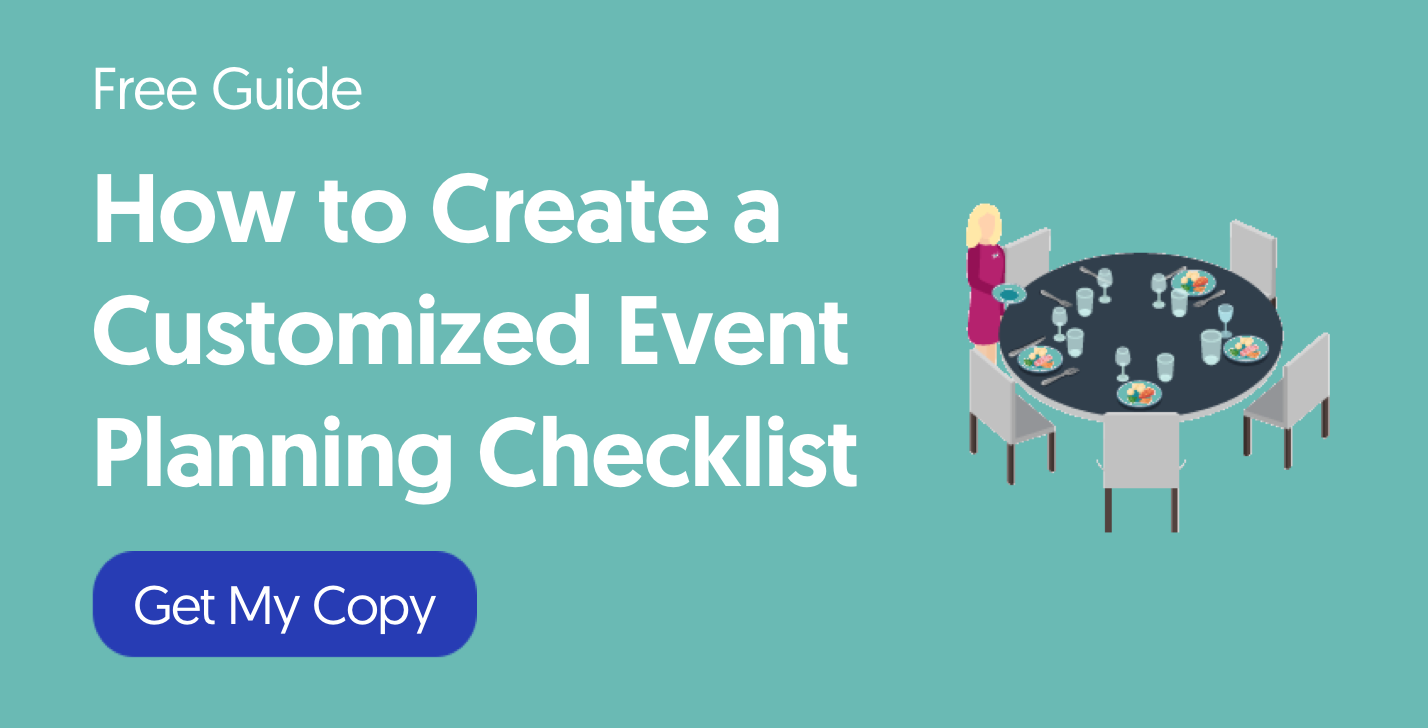
More about how to plan an event:
1. Align on the event purpose with stakeholders
2. Lock in your event budget
3. Figure out who your potential attendees are
4. Find a venue that fits your event purpose
5. Establish the event team
6. Promote your event with a strong marketing plan
7. Seek out sponsors to help finance the event
8. Work with suppliers based on your event needs
9. Utilize event technology to streamline planning
10. Create a compelling & interactive event agenda

